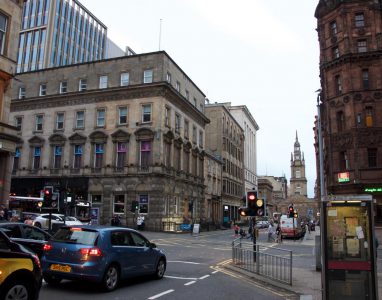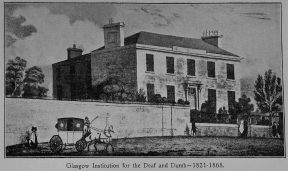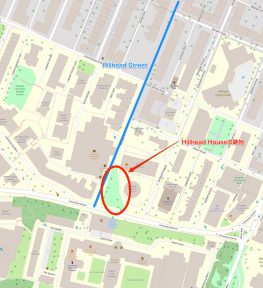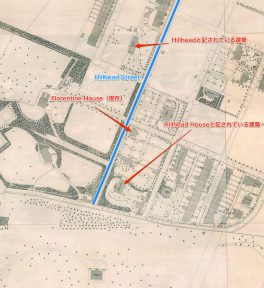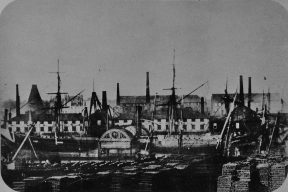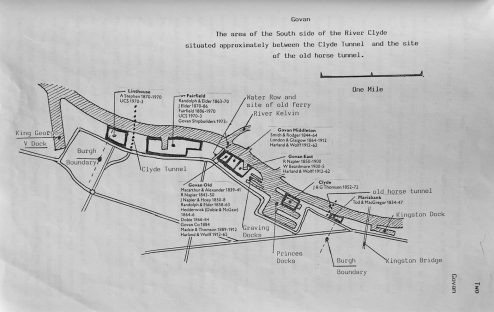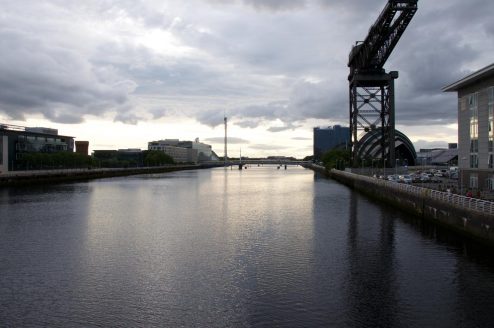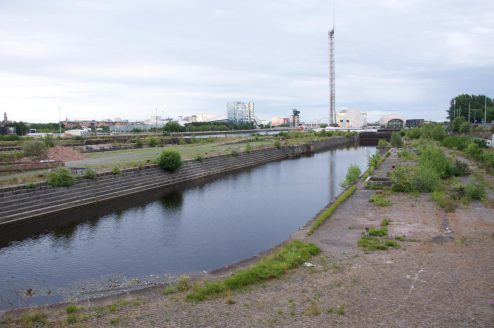このページは木下知威「グラスゴーにおける山尾庸三の生活圏」(『新・史都萩』史都萩を愛する会、第74号、2020年7月)で言及した事柄に関連する文献と図版を紹介しています。本文と併せ読んでいただくことで、より理解を深めていただければ幸いです。
『新・史都萩』は山口県萩市の萩博物館におかれている、史都萩を愛する会が発行する会報です。
・山尾庸三とグラスゴー地図
青:ヒルヘッドハウス
山尾に関する既往文献については以下を参照。
三好信浩『日本工業教育成立史の研究 増補』の山尾に関する項目。
北政巳「日蘇比較経済史の一考察–アンダ-ソン・コレッジの同級生, ダイアーと山尾庸三」
Henry Dyer “Dai Nippon, the Britain of the East; a study in national evolution”
London, Blackie & son, limited, 1904.
清水英範, 石井 浩一郎「山尾庸三の官庁集中計画に関する研究」
久田信行「盲唖学校の成立と山尾庸三–吉田松陰の思想と時代背景」
久田信行「盲唖学校の成立と山尾庸三(補遺) : 建白書と暗殺事件」
・コリン・ブラウン
コリン・ブラウンの訃報記事。
“Death of Mr.Colin Brown” in The Musical Herald and Tonic Sol-fa Reporter, No.586, Jan. 1, 1897, p9.
コリン・ブラウンが開発した楽器について
ENHARMONIC HARMONIUMS
ヒュー・マセソン(1820-1898)の回想。本文中にコリン・ブラウンとの関係が記されている。
Hugh Mackay MATHESON “Memorials of Hugh M. Matheson. Edited by his wife with a prefatory note by the Rev. J. O. Dykes M.A., DD,.”, London : Hodder & Stoughton, 1899.
・グラスゴーについて
18-19世紀グラスゴーの都市開発の通史は数多いが、例えば以下。
Moore, John N (1994) The Town Plans of Glasgow, 1764-1865: A History and Cartobibliography. MLitt(R) thesis, University of Glasgow.
グラスゴーのろう者の仕事の実態がわかる事例として、1870年にグラスゴーのろう者が造船所に勤務していることを指摘する文献は以下。
Hutchison IC (2005) “Voices from the past: early institutional experience of children with disabilities – the case of Scotland” Developmental Neurorehabilitation, 8 (1), pp. 67-77. https://doi.org/10.1080/13638490410001727455
グラスゴーの医師ジェームズ・カー・ラブが報告する、1865年と1895-96年のろう者の仕事の一覧表は以下。
James Kerr Love, “Deaf mutism : a clinical and pathological study” Glasgow : James MacLehose, 1896, pp.351-352.
これらはいずれも、当時のろう者支援団体が集計したものであり、グラスゴーのろう者の全体を統計したものではないことに注意が必要であろう。例えば、1851年の国勢調査から家族内に盲人やろう者(当時の呼称では「聾唖者」(Deaf and Dumb))がいるかどうかを問う項目が設けられるようになった。その反映として、David Buxtonによる統計的報告“The census of the deaf and dumb in 1851”(1855)がある。Buxtonによれば、グレートブリテンとアイルランドで17,300人のろう者がいたとする。
・山尾のグラスゴー生活時のグラスゴー聾唖院
グラスゴー聾唖院
1868年以降はクライド川南に移転する。上のグーグルマップにプロットした。
出典:Scott Moncrieff Penney, “Education of the Deaf and Dumb in Glasgow 1819-1919”, Glasgow: John Horn, 1919.
・ヒルヘッド・ハウスについて
山尾がグラスゴーに来た時にコリン・ブラウン一家が一時的に住んだ住宅である。現在はグラスゴー大学のマクミラン円形読書室が建つ一帯である。全体は上のGoogle Mapsで把握されたい。
左の出典:OpenStreetMapより加筆。© OpenStreetMap contributors
右の出典:“City of Glasgow, Lanarkshire VI.6 (Govan)”(1860)を元に加筆。
コリンの息子であるジョージがヒルヘッド・ハウスを回想する記事は以下。
George Graham Brown “HILLHEAD HOUSE” in The Glasgow Herald, March 4, 1929, p11.
この記事の全文を転記する。「****」は不鮮明な箇所のため、判読できなかったところを指す。下線部が日本人に関する言及であり、本稿で言及したところである。
HILLHEAD HOUSEEdinburgh, March 1.Sir, — The correspondence about Hillhead, and especially Hillhead House, has been brought under notice, and, having lived there as a child, I would like to make some reference to the subject, although references cannot be easily verified and memory is an uncertain aid.
As to the main access from Glasgow, I was given to understand that the ancient route for the “Bishop’s Visitation” came out from his Castle and along Dobbie’s Loan. It descended to a path beside the Kelvin, crossed the ford or the little bridge between Great Western Road and Gibson Street, then came up “Glasgow Street,” passed the old house, and continued down to Partick. This may explain the use of Dobbie’s Loan for University Avenue in 1869.As to the situation of Hillhead House, it is rather a striking commentary on our city and its expansion to say that in 1866 my father, Mr Colin Brown, took his family from Douglas Street, at Blythswood Square, to live in the country, as Hilihead then undoubtedly was, with its unpaved roads and very insufficient means of access. Some of your readers must recall the wooden steps down to Great Western Road at the end of Hillhead Street.The grounds of the house then extended for nearly the length, of Hillhead Gardens, and back to a lane beside “St Bernard’s Place.” I understand three sketches of the house were afterwards shown in an “Old Glasgow” Exhibition in the eighties. I saw one of them by courtesy of a descendant of the late Mr Gibson, but it was hardly sufficient to recall the house as we knew it in its last days.Since the sketch printed in the “Herald” was made it must have been considerably altered, probably by Mr Gibson himself, as the “best bedrooms” were built above the old stone-flagged lattice-windowed service rooms of a much earlier time. The date of 1708 was out above the stable window, a detached building to the north, and this may show the alteration.It was then an ideal house for children. and I have delightful memories of the old garden, with an avenue of beeches and a row alms which helped to hide it from its neighbours, as well as from the newly made roads that manifestly encroached on our boundaries.Your correspondent Mr Blackie made a courteous reference to the musical interests which centred in the old house. Let me add that among many visitors the first John Curwen was a much-loved guest in it, and that some of the successful beginnings of the tonic sol-fa movement were developed while be stayed there.One personal reminiscence may be of general interest in the march of time. It is that of two other small boys who, with their nurse, joined our restricted circle on the grass in the days when conversational powers were limited. One of them now signs himself Cosmo Cantuar, by the grace of God and his brother is known and honoured[honored] in our East country.I add an incident which came in the courses of a great national upheaval, and which shows how quickly history is made. My father had become responsible for the wellbeing of, I think, the first Japanese Samurai who came to this country to study shipbuilding, against great opposition by the then Government. He afterwards became a viscount and guardian to the heir apparent, but while he stayed with us I recall having opened the door of the dining room and seeing a group of his friends sitting on the floor in eager dissuasion round a low stool which held tea. It was a council of the new Japan party, led by the famous Count Ito, before their return to bring into being the great Empire of East.On another point, may I say that I think there is a little ****** between Mr Hamilyon’s house of ******, which was surely ****** into ****** *****, ******* Drive, and Mr John Bell’s house *** the **** *** of the road **** “The ******” ******** The letter was *** By Mr Bell with the thought of ********* to the city, and only the tragedy of an incomplete catalogue and unfinished will prevented it and its contents from becoming the property of the citizens. — Apologising[Apologizing] for having fallen into “anecdotage” on a subject which may not be of general interest to your readers, I am, etc.,George Graham Brown.
ヒルヘッド・ハウスの北側にあるフロランタン・ハウスは現存する。
岩倉使節団がグラスゴーを訪問したことについては、『特命全権大使 米欧回覧実記 二』(岩波文庫)を参照。
薩摩藩士がグラスゴーを訪問したことについては、門田明、テリー・ジョーンズ『カリフォルニアの士魂 : 薩摩留学生長沢鼎小伝』本邦書籍、1983年、76頁に記されている。典拠としているのは鹿児島新聞における長澤からの聞き取りである。
・ネイピア造船所について
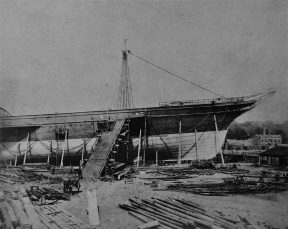
左:1855年のネイピア造船所とする写真。 右:1853年のネイピア造船所とする写真
出典:John Hume, Michael Moss “Clyde shipbuilding from old photographs” London: B. T. Batsford, 1975.
ネイピア家の基本資料について
Records of the Napier family, shipbuilders and marine engineers, Glasgow, Scotland
グラスゴー大学が所蔵する(要問い合わせ)。
ロバート・ネイピア(Robert Napier, 1791-1876)の伝記については以下。
James Napier “Life of Robert Napier of West Shandon” Edinburgh and London: William Blackwood, 1904.
ネイピア造船所における造船とロバート・ネイピアの活動については以下。
Crosbie Smith “Coal, Steam and Ships: Engineering, Enterprise and Empire on the Nineteenth-Century Seas”, Cambridge University Press, 2018.
ネイピアの技術開発としてウィリアム・ランキンと取り組んだ熱風エンジンの改良について論じたものについては以下。
Marsden, B. (2006). “Superseding Steam: the Napier and Rankine Hot-air Engine” in Transactions of the Newcomen Society, 76(1), 1-22. https://doi.org/10.1179/175035206X105186
ネイピア造船所の位置については、Browning“A History of Clyde Shipyard”(1991)において検討された結果を引用した。
出典:Anthony S. E. Browning “A History of Clyde Shipyard”
・現在のクライド川周辺。造船所は跡形もないが、ドックは一部残っている。
・アンダーソンズ・ユニヴァーシティ(現・ストラスクライド大学)について
多くの山尾研究において、山尾がグラスゴーで学んだ大学を「アンダーソン・カレッジ」と表記するのは誤りだと考えられる。
アンダーソンズ・ユニヴァーシティの学校史は二点挙げられる。
Alexander Humboldt Sexton “The First Technical College: A Sketch of the History of “the Andersonian,” and the Institutions Descended from It, 1796-1894″, Chapman and Hall, 1894.
ジョン・アンダーソン(John Anderson, 1726-1796)の思想とスコットランド啓蒙主義については以下。
Alexander Broadie “The Cambridge Companion to the Scottish Enlightenment” Cambridge University Press, 2003
23, 109-110頁にアンダーソンについての言及がある。

